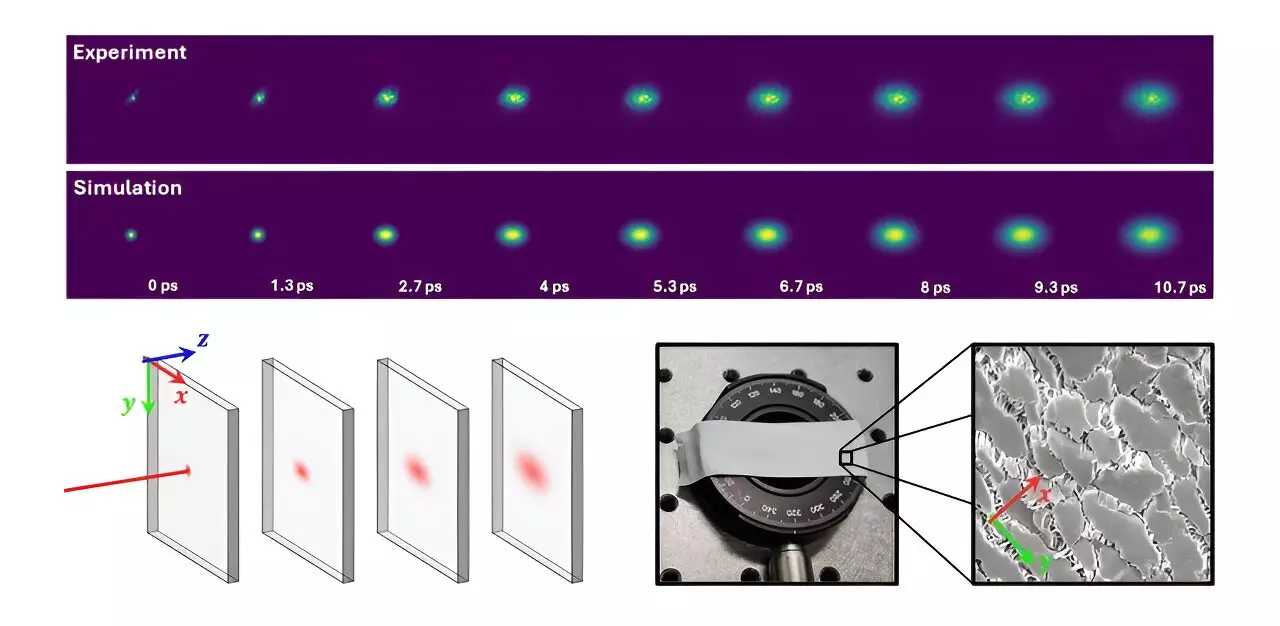The phenomenon of light scattering in materials is a complex interplay that poses significant challenges across multiple disciplines, including physics, engineering, and the life sciences. Anisotropic materials, which exhibit direction-dependent properties, complicate our understanding of how light interacts with them. Traditional methods for studying these materials often assume isotropic behavior for simplicity; however, this approach can lead to misconceptions and inaccuracies in interpreting the optical characteristics of materials like biological tissues, polymers, and other engineered substances. Recent advancements in measurement techniques offer new hope in unraveling the complexities of light behavior in these anisotropic materials.
In a major stride towards comprehensively understanding anisotropic scattering, researchers at the European Laboratory for Nonlinear Spectroscopy (LENS) have unveiled a novel technique that integrates time-domain transmittance measurements with robust Monte Carlo simulations. Published in the journal Advanced Photonics Nexus, the study utilized this innovative approach to analyze widely used anisotropic materials—specifically, Teflon tape and paper. The choice of materials is not random; Teflon tape, with its extensive industrial applications, and paper, noteworthy for its cellulose fiber alignment, are excellent representations of benefits and challenges in studying anisotropic properties.
The researchers employed a transient imaging technique to observe alterations in light patterns originating from ultrashort laser pulses. This methodology allows for real-time tracking of light behavior as it interacts with the material, providing a dynamic view of the scattering process. The synchronization of experimental measurements with advanced simulations enables the researchers to paint a detailed picture of how light scatters differently across multiple orientations in the material.
One of the most groundbreaking findings of this study is the researchers’ ability to obtain the complete scattering tensor coefficients for Teflon tape and paper, a feat that had not been accomplished in previous studies. This achievement underscores the impact of anisotropic analysis, as it highlights the profound differences in light diffusion—effectively debunking the oversimplified isotropic assumptions that have dominated earlier research.
Dr. Lorenzo Pattelli, a leading figure from the Italian National Institute of Metrological Research, has pointed out the significant implications of incorporating anisotropic considerations into material studies. He noted, “The assumption of isotropy in scattering materials has led to systematic errors in the reported scattering coefficients.” By measuring the scattering properties with an awareness of their inherent anisotropy, the study significantly improves our understanding of these materials, thus paving the way for more accurate applications in a myriad of fields.
Applications in Medical Imaging and Material Science
The implications of this research extend far beyond academic interest. The improved techniques for characterizing anisotropic materials can lead to transformative advancements in medical imaging technologies. As diagnostic methods increasingly rely on light scattering to visualize and analyze biological tissues, having a refined understanding of how light interacts with these complex materials is crucial. Enhanced imaging techniques can improve the accuracy of diagnostics, leading to better patient outcomes.
Furthermore, in material science, the ability to characterize light scattering in anisotropic materials can facilitate the development of improved polymers and composites, with applications ranging from electronics to aerospace. Understanding the optical properties of these materials allows engineers and scientists to tailor them for specific uses, potentially creating products with optimized performance characteristics.
With the introduction of this robust methodology for studying anisotropic light scattering, a new chapter has begun in the quest to accurately characterize materials that display complex behaviors. The integration of time-domain measurements with thorough simulations not only clarifies our understanding of how light interacts in these media but also prompts a reevaluation of longstanding assumptions in the field. As researchers continue to refine these techniques, the knowledge gained promises a wealth of advancements that could touch numerous aspects of science and industry, pushing the boundaries of what is currently possible in optical characterization and analysis.


Leave a Reply